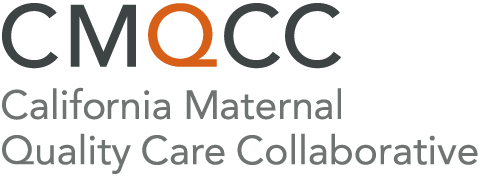Maternal sepsis is now the 2nd leading cause of both maternal mortality and severe maternal morbidity. Data from the California Pregnancy Associated Mortality Review (CA-PAMR) committee report estimate that 63% of maternal deaths from sepsis had a good or strong chance to have been preventable. Furthermore, for each maternal death, there are 50 women who experience life-threatening morbidity from sepsis. This is concerning, given that prompt recognition and rapid treatment of pregnant and postpartum women with sepsis usually results in good outcomes in this young and generally healthy population.
To assist healthcare providers in implementing evidence-based methods for timely recognition and treatment of sepsis, a community co-designed and co-led quality improvement Collaborative for obstetric sepsis has been launched in two states (California and Michigan). CMQCC has partnered with the Dunlevie Maternal Fetal Medicine Center at Stanford University, Michigan AIM, and Duke University to increase the impact of this effort.
The Obstetric Sepsis Collaborative engages mentor-led groups of 6-10 hospitals. Each group has 4 mentors including a nurse, physician, community leader, and a patient with lived experience who add unique perspectives on this work. The Community Leadership Group and the Clinical Advisory Board in partnership with the project leadership have developed a number of resources that will advance the care of patients with sepsis. Many also address generalizable issues for all severe maternal complications.
- Obstetric Sepsis Flow Chart for Screening and Diagnosis
- Urgent Maternal Warning Signs (developed by AIM/ACOG and the CDC)
- Advocacy Tips for Patients and Families
- Warning Signs Follow-up Guide for Health Care Professionals
- Guide for Patient and Family Debriefs before Discharge
The CMQCC QI Toolkit: Improving Diagnosis and Treatment of Maternal Sepsis toolkit published in January 2020, is undergoing revisions to include new advances and resources developed during the collaborative noted above.
These resources and revisions of the toolkit are all downloadable in the “Resources” section of our website: Improving Diagnosis and Treatment of Maternal Sepsis
